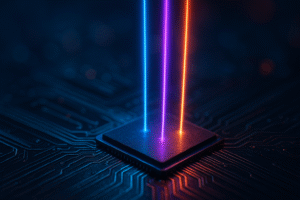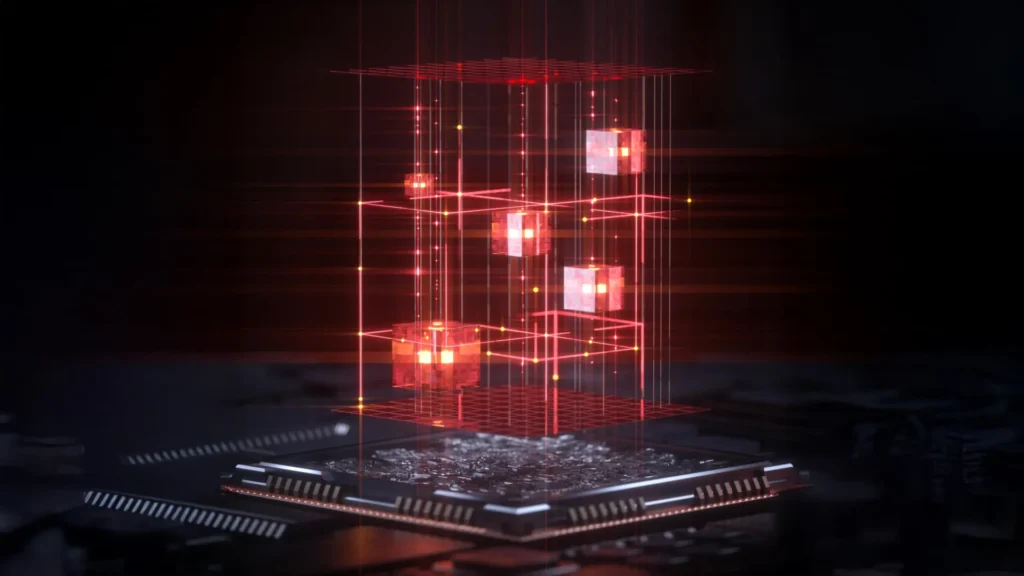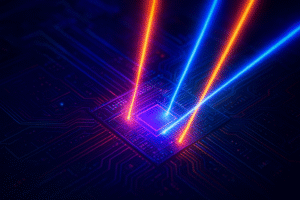
A Single Beam of Light Runs AI: How Photonic Tensor Computing Could Redefine Machine Intelligence
📰 Introduction: The Light That Thinks
What if light itself could think?
In a world where silicon is reaching its physical limits, researchers at Aalto University have unveiled something that sounds almost sci-fi: an AI system powered entirely by light. Their experiment shows how a single beam of light can execute complex tensor operations — the very foundation of neural networks — without a single electron moving.
While humans and classical computers perform these operations step by step, light can do them all at once, effortlessly and passively.

⚙️ How the Experiment Worked
The Aalto University team created a setup where data is encoded directly into light waves. By adjusting the phase and amplitude of these waves, the researchers made them interact in ways that naturally perform tensor calculations — the same math that powers today’s AI models like GPT or Stable Diffusion.
Here’s the breakthrough:
Unlike electronic systems, which consume vast amounts of power moving electrons through circuits, light-based systems compute passively. The photons themselves do the math — and they do it in a single pass, meaning the entire operation happens at once.
If integrated into photonic chips, this could lead to AI processors that are:
🔥 Thousands of times faster than GPUs
💡 Nearly zero energy cost
🌱 Completely heat-free and silent
🚀 Why This Matters for the Future of AI
The implications are enormous.
Modern AI, especially large language models (LLMs), consumes terawatt-hours of electricity. The training of GPT-4, for instance, reportedly used millions of dollars in energy costs.
But with photonic tensor computing, we may be looking at the next leap — from digital AI to optical AI.
Imagine:
Data centers powered by light beams instead of silicon.
Quantum-like parallelism without the fragility of qubits.
AI models running locally on ultra-fast, energy-free photonic chips.
This is not quantum computing, but a new hybrid frontier — one that merges optics and intelligence into a single luminous system.
🔬 From Lab to Reality: The Path Ahead
While still experimental, the photonics group believes this can be integrated into on-chip architectures soon.
Aalto’s prototype operates in the visible spectrum, but future versions could use integrated silicon photonics, making them compatible with today’s chip fabrication methods.
The next challenge is scalability — translating this one-beam method into multi-layer optical neural networks that can rival NVIDIA’s GPUs.
And once that happens, AI training could move from megawatts to milliwatts.
🌐 India’s Role in Photonic AI Innovation
India’s emerging semiconductor initiatives, such as Digital India RISC-V programs and photonics research at IITs, can benefit immensely from these discoveries.
A Square Solutions, which tracks AI hardware evolution closely, has previously discussed AI efficiency breakthroughs and optical computation trends — marking this as a critical milestone in the race toward sustainable intelligence.
🧭 Conclusion: A Brighter Kind of Intelligence
The phrase “AI runs on light” is no longer poetic — it’s becoming real.
By letting photons replace electrons, we might finally build machines that think as fast as light travels — efficiently, silently, and sustainably.
This isn’t just an upgrade to computing.
It’s a paradigm shift in how intelligence is created.



